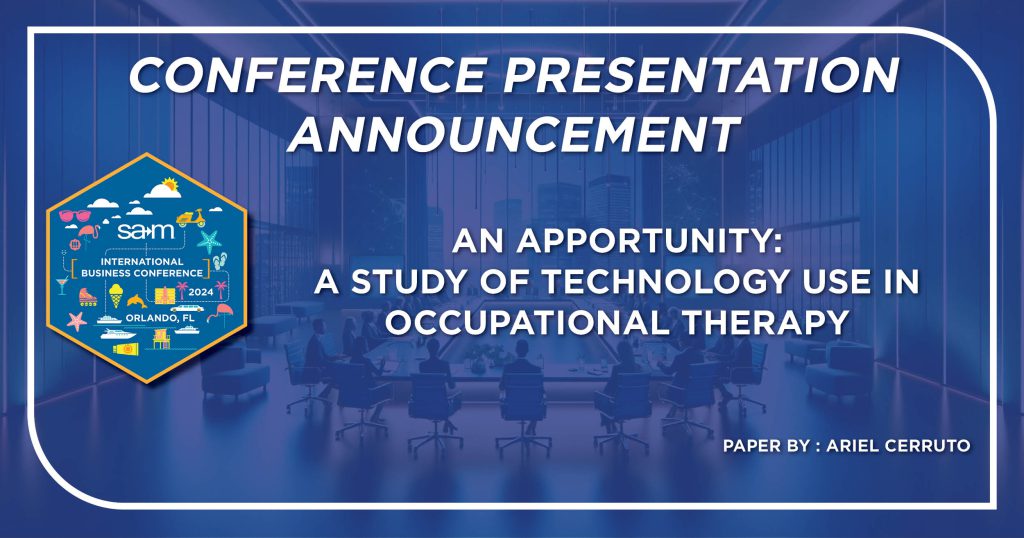
The programming committee for the 79th Annual SAM International Business Conference is pleased to announce the acceptance of the presentation, An APPortunity: A Study of Technology Use in Occupational Therapy by Ariel Cerruto.
In the ever-evolving landscape of healthcare, the financial burden of accessing essential services remains a pressing concern for many patients. This issue is especially pertinent in the realm of outpatient occupational therapy, where high copayments often serve as a formidable barrier to care. A pioneering study recently conducted offers a glimmer of hope and a potential solution to this challenge. The findings of this research are set to be presented at the prestigious SAM International Business Conference, marking a significant milestone in the pursuit of more accessible healthcare solutions.
The study in question embarked on a comparative analysis of two groups of post-surgical patients. The traditional approach, where patients attended therapy sessions twice a week, was juxtaposed against an innovative model. In this novel approach, patients attended therapy once weekly and supplemented their care with a new application developed specifically for the study. The underlying hypothesis was bold yet straightforward: the outcomes of both groups would not significantly differ, suggesting a viable pathway to reducing patient expenses without compromising the quality of care.
To measure the effectiveness of these two models, the study employed a range of outcome measures. These included the self-reported Numerical Pain Rating Scale, the QuickDASH (Disabilities of the Arm, Shoulder, and Hand), as well as various range of motion and strength measurements. Despite the small sample size, which limited the possibility of a comprehensive statistical analysis, the initial trends revealed in the study are both encouraging and compelling. Patients who utilized the app reported positive outcomes that mirrored those of the group receiving traditional in-person therapy. Notably, these outcomes included improvements in wrist flexion, supination, thumb IP flexion, grip, and tip pinch strength. Additionally, reductions in pain levels and QuickDASH scores were observed, alongside a significant decrease in the duration of therapy required before discharge.
The implications of these findings are profound. By demonstrating the potential for digital tools to complement traditional therapy effectively, this study paves the way for a more flexible and financially accessible model of care. The significance of this research cannot be overstated, especially in a world where the cost of healthcare continues to rise, and access becomes increasingly stratified.
As the SAM International Business Conference approaches, anticipation is building for the presentation of this paper. It stands not only as a testament to the innovative spirit that characterizes the field of healthcare but also as a beacon of hope for patients facing financial barriers to care. This research offers a compelling argument for the integration of digital tools into therapeutic practices, suggesting that such innovations could be key to democratizing access to essential healthcare services.
In a broader sense, the study underscores the importance of adaptability and innovation in addressing the systemic challenges of healthcare accessibility. As we look forward to the insights and discussions that will emerge from the SAM International Business Conference, it is clear that this research represents a critical step forward in our collective journey towards a more inclusive and equitable healthcare system.
Join us online or in person at SAMIBC 2024 and see this great presentation and many more March 19 – March 23, 2024. For registration information visit www.samnational.org/conference.
